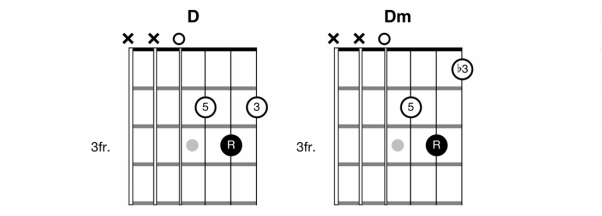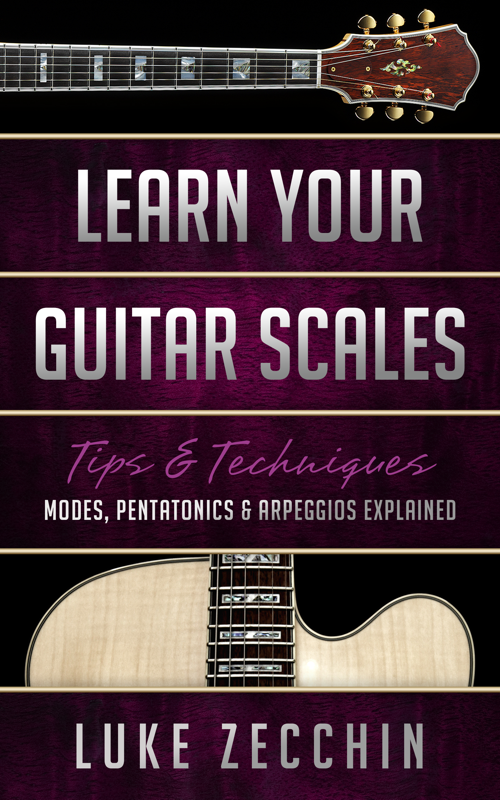Why Scales?Do we need to learn about scales to make music? The short answer is “No.” In a book about guitar scales, this may seem an unexpected answer. The truth is, creating music can be as simple as playing something you like the sound of. This is, after all, how most of us judge music as listeners. The deciding factor isn’t usually whether we can make sense of it theoretically, but simply whether we think it sounds good. Scales will be of little help if we lose sight of the fact that music is ultimately a creative endeavor. Having said that, it would be a mistake to conclude that scales are therefore not important. In creating anything musical, we’re already engaging with scales, whether or not we know it. Scales are the basis for everything we do on guitar. They’re foundational to things like improvisation, songwriting, arranging, understanding theory, and building technique. For guitar players, scales are a vital part of the language of music. Scales are an essential tool for understanding how things are connected on the guitar neck. Beyond the obvious benefit practicing scales holds for tasks like developing technique and finger dexterity, understanding scales is fundamental for fretboard navigation. Being able to play effortlessly in any position on the fretboard, regardless of the key, is the byproduct of a solid grounding in guitar scales. Learning scales not only provides a framework to help communicate our musical ideas, but it also opens the door to new creative possibilities. The belief that theory somehow inhibits creativity is a misconception. In most cases, the reverse is likely true: A lack of understanding will stifle creative potential. Many guitarists feel stuck playing the same old patterns and licks simply because they can’t use what they don’t know. Creative freedom comes from engaging and experimenting with the fundamentals, not from ignoring them. Understanding ScalesFor many, the topic of guitar scales can be daunting. While this is a reflection of the sheer number of scales that exist, it’s also symptomatic of the way scales are commonly taught. As guitar players, we tend to think of scales simply as shapes on the fretboard. Although this is helpful from a practical standpoint, it gives little indication of what they are and how we might apply them. The best place to start in understanding scales is actually not to start with scales at all. While scales are foundational, intervals are the real building blocks of music. An interval is the distance from one note to another. Even a slight shift in this relationship can create an entirely different mood or feel. Major and minor chords, for example, are theoretically just one half step away from being the same chord. It’s this slight movement in the middle interval (the flattened 3rd) that dramatically changes the chord’s character: Simply put, a scale is a series of notes with fixed intervals. This means the structure these notes follow doesn’t change, even when the scale is played in different keys (this is why most scale shapes on guitar are movable). It’s this fixed sequence of intervals that evokes a scale’s unique tonal flavor, or sonic personality, for composing or improvising. Like chords, scales can contain many of the same notes, but it’s the slight differences that give a scale its distinct character. In the Western world, there are only twelve notes in the musical alphabet. The endless creative options available to us come from the way we position these notes in relation to one another. Technically, we use patterns to visualize how notes can be grouped together on the fretboard. Creatively, however, it’s more useful to think of a scale as describing a distinct sound or mood, rather than simply referring to a particular shape. Tip: Sometimes it’s helpful to think about playing music in the same way we listen to it. When listening to music, we’re not concentrating on shapes or positions; we’re focused on sounds and emotions. While the technical aspects of learning an instrument are undeniably important, they’re less significant than the ability to communicate something through the notes being played. Using ScalesAs already established, guitar players tend to learn about scales visually. However, just being shown what they look like on the guitar fretboard doesn’t actually help us use them. While scales are typically taught and practiced in ascending or descending sequences, this isn’t how they’re used in real-world situations. An audience will rarely care how many scales you know or how fast you can play them! The whole point of learning this information is to create something with it. Scales are simply the palette from which we express our musical ideas. Guitar players are commonly confused about when and how to use scales. Unfortunately, scales aren’t all that helpful if we don’t understand how to apply them. In part, this confusion occurs because we’re often taught to view chords and scales as separate entities that have different functions. A common example of this is the question, Do you play rhythm or lead guitar? While in a practical sense chords suit rhythm playing and scales suit lead playing, theoretically they’re both derived from the same place. As already stated, intervals are the fundamental building blocks of music. We use them to create both melody and harmony. Chords and scales are therefore intrinsically related. When we talk about playing in a particular key, we mean that notes used to construct chords and melodies relate to the same fixed sequence of intervals. A practical way to view this relationship would be to say that we build chords using scales. For example, all chords in the key of G major are built exclusively from notes within the G major scale and vice versa. This is why melodic ideas structured around the G major scale will work over a G major chord progression. They’re both drawing on the same collection of common notes. It’s this inherent chord/scale connection that forms the missing link where many players become confused. To reiterate, scales are used to create both rhythmic and melodic structures. A songwriter will (knowingly or unknowingly) compose the melodic and harmonic elements of their song based on the mood or personality of a particular scale. As lead guitarists, our contribution to a song often comes after the chord progression has been established. Our task, then, is to find the appropriate scale (or scales) to base our melodic ideas on from notes within the chords being played. Tip: In many cases, this is relatively straightforward, since numerous progressions in popular music tend to stay within a single key center. However, it’s not uncommon for a progression to temporarily borrow chords from another key signature or move to another key entirely. In these situations, our choice of scales needs to be informed by the specific chords being used, not just a single overall key center. Copyright © 2016 Luke Zecchin
Comments are closed.
|
Articles10 Chord Mastery Tips!
Guitar Chords 101 10 Memorization Tips Fretboard Memorization Fretboard Anatomy 101 Guitar Setup Basics 4 Keys to Great Playing! FREE Jam Tracks! 10 Tips for Better Solos Playing vs Practice 10 Scale Mastery Tips! Guitar Scales 101 3 Simple Guitar EQ Tips Rode NTR Mic Review iZotope RX - On Guitar Dealing with Latency Slate VCC | VTM Review GarageBand v Logic X 5 FREE Guitar Plugins Logic Pro X for Guitar Pedals vs Multi-Effects How to Roll Leads Stop Breaking Strings? When to Change Strings Using Neck Diagrams 5 Essential Tuning Tips 7 Beginner Mistakes |








